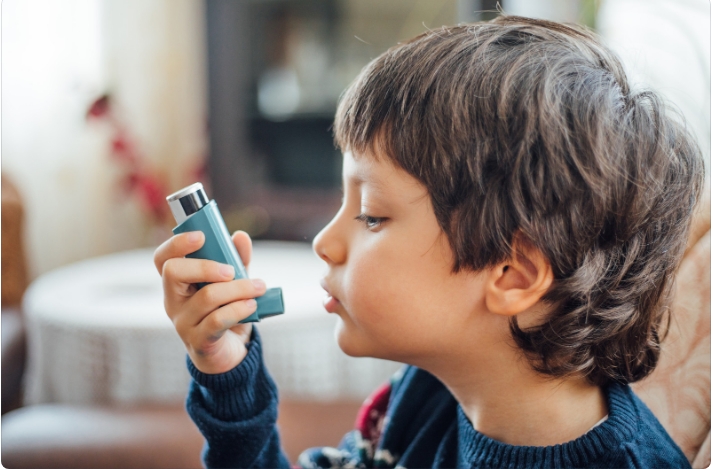Respiratory emergencies are always a bit unsettling, especially for small children. It can be stressful both for the child and the parents when their small ones have trouble breathing.
In effort to calm everyone’s nerves, here we discuss common respiratory emergencies in children and how we treat them.
Pediatric Respiratory Emergencies
Respiratory distress in children is a common cause of emergency room visits in Australia.
The severity of these conditions ranges from mild, self-limiting disease to life-threatening forms involving narrowing of the airways and breathing difficulties.
The anatomical differences between children and adults render small child to be more susceptible to airway compromise. The latter have proportionally larger heads and relatively lax cervical support, which increases the likelihood of airway obstruction.
Although uncommon, respiratory failure can occur in some cases, causing cardiopulmonary arrest. Respiratory arrest is the top cause of cardiac arrest in children.
Here are four common pediatric respiratory emergencies.
Asthma
Asthma is a respiratory condition that is common in adults and children. In fact, it is the most activity-limiting condition in children, accounting for millions of lost hours on school days every year.
Asthma is a chronic disease in the lower airways associated with bronchospasm and wheezing.
People living with asthma typically keep home treatments available. If medications do not work or the person is out of supply, a respiratory emergency can commence quickly.
Croup
Croup is a respiratory condition that typically presents in small children between six months and three years. It is characterized by a child’s high-pitched creaking or whistling sound when breathing in, which is called “stridor.”
Bronchiolitis
Sometimes mistaken for asthma, bronchiolitis is a common lower respiratory tract condition that is the leading cause of hospitalization in infants. It is a viral disease that strikes children younger than two years of age, with a peak during the first six months.
Without treatment, bronchiolitis can lead to respiratory failure and death.
Pneumonia
Pneumonia is known as an old-person disease, but it is also a serious health risk for children. A bacteria or virus can cause it, and its typical symptoms include fever, productive cough, chest pain, and congestion.
In infants, pneumonia is present as lethargy, poor feeding, or irritability.
Pneumonia is one of the top causes of death in children globally. The condition is not to be taken lightly, and parents need to stay alert for symptoms.
Respiratory Emergencies First Aid
Although there are many specific causes of airway emergencies, there are certain basic first aid principles and management to apply.
Prompt recognition of respiratory emergencies obstruction and correct management of these conditions are critical to achieving optimal outcomes.
Here’s what to do in a first aid respiratory emergency.
Ensure scene safety
Ensure safe access to the victim and consider exposure to toxic materials in the surroundings. Assess the need for any additional resources.
Look for possible MoI (Mechanism of Injury)
Observe the scene and look for the mechanism of injury. Ask questions to the victim (if conscious) or family members and bystanders in the area.
Observe the victim for any signs of chest pain, fever, urticaria, etc.
Perform primary assessment
Assess the level of breathing and ensure that airways are open. Evaluate for rate, depth, effort and tidal volume.
Closely monitor the chest for DCAP-BTLS (deformities, contusions, abrasions, punctures, burns, tenderness, lacerations and swelling. Try to determine if the breathing is adequate or not.
Any altered level of consciousness in the victim may need emergency help.
Monitor other symptoms.
Look for any changes in mental status and examine the skin for hives and altered colour. Cyanosis is a common sign of hypoxia.
Let the victim rest
Whether sitting, standing, or in a lying position, let the person rest in whatever they feel most comfortable.
Call 000.
If getting rested and being in a comfortable position is not doing the trick after several minutes, it is time to call triple zero (000).
Use your best judgement and if you suspect the victim is severely short of breath, call triple zero immediately.
Perform CPR
Monitor the person’s airway, breathing, and pulse. If necessary, begin CPR. Help the person use any prescribed medications such as an asthma inhaler or home oxygen.
Continue monitoring the person’s breathing and pulse until medical help arrives.
Conclusion
The signs of respiratory distress may be similar to other medical conditions. Always consult a paediatrician for a diagnosis. But if a child is having difficulty breathing, call medical services or go to the closest emergency room.
Not all respiratory emergencies are entirely preventable, but quick and effective first aid treatment can help prevent further problems. Readiness, alertness, and decisive action on the responder’s part can prevent many of the associated complications.
The primary responsibility of the first responder is early detection and providing swift treatment.
Learn first aid today and be ready to respond to respiratory emergencies in children.







